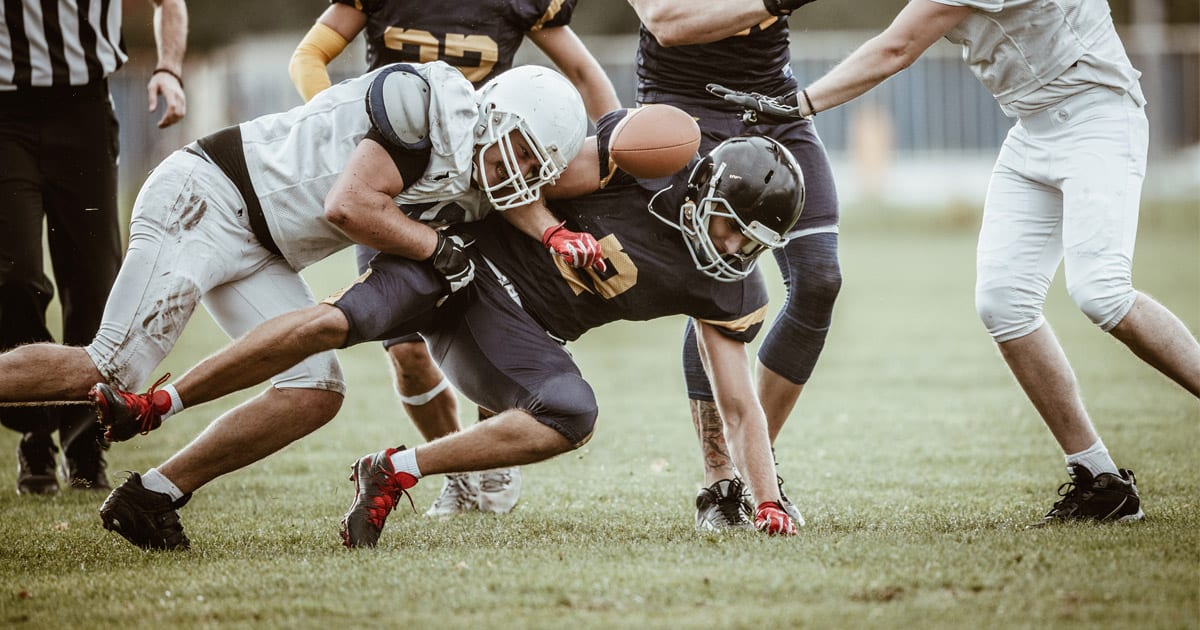Dislocated Elbow

It’s football season and an uncommon but significant injury at this time of year is a dislocated elbow. Although the elbow is strong and stable, like the shoulder, it can dislocate. While this injury can be painful, with the proper diagnosis and treatment from an orthopedic specialist, it can heal often times without the need for surgery, and allow an early return back to activities.
In today’s post, Dr. Brandon P. Donnelly, MD discusses elbow dislocations and how they are treated.
What is a Dislocated Elbow?
 Although the elbow is very stable, it is susceptible to repetitive injuries as Dr. Donnelly discusses in his blog post - Treating Tennis Elbow. However, when you fall with your arm completely extended, the elbow can become dislocated or “out of joint.” Although elbow dislocations happen most often in children, sports activities are responsible for at least half.
Although the elbow is very stable, it is susceptible to repetitive injuries as Dr. Donnelly discusses in his blog post - Treating Tennis Elbow. However, when you fall with your arm completely extended, the elbow can become dislocated or “out of joint.” Although elbow dislocations happen most often in children, sports activities are responsible for at least half.
There are three joints that make up the elbow. In the upper arm, the humerus is the primary bone. In the forearm, the radius and ulna make up the lower elbow. An elbow dislocation occurs when the joints of the elbow are partially or completely separated. Symptoms of a dislocated elbow include pain, deformity, and the inability to bend your arm.
In addition to simple elbow dislocations (no fractures), the elbow can have a fracture-dislocation that involves the joint being separated AND a fracture. These are usually more severe injuries and many times require surgical fixation.
How are dislocated elbows treated?
If you fall and think you have a dislocated elbow, urgent evaluation in a emergency setting is required. Many times, the elbow is able to be reduced, or put back in joint, in the ER or an Orthopedic Urgent Care Clinic followed by placing the arm in a splint for protection.
Prompt evaluation by an orthopedic specialist is recommended within the first week 3-5 days of injury. In cases of dislocation without fracture of the bones, surgery is usually not necessary. The arm is usually removed from the splint at this first visit and transitioned to a brace to allow some early movement.
dislocated elbow - Immobilize, but for how long?
In the past, patients who dislocate an elbow were required to keep their arm immobilized for long periods of time. However, a recent study in the Orthopaedic Journal of Sports Medicine showed that “prolonged mobilization (more than 3 weeks) was associated with poorer outcomes and larger flexion contractures.” The study further found that “immediate treatment and a short period of immobilization (1-5 days) produced the best outcomes. In fact, prolonged immobilization was associated with increased disability and residual flexion contracture.”
What this means is that treating an elbow dislocation immediately after injury and immobilizing it only a short period of time, leads to better results. Often physical therapy is recommended earlier on to encourage a speedy return to fuller range of motion.
With effective treatment athletes can get back to playing 3-6 weeks after suffering a dislocated elbow.
"Often physical therapy is recommended earlier on to encourage a speedy return with a fuller range of motion. "
Seek Treatment for an elbow dislocation
If you’ve injured your elbow and are unable to move it, have severe pain, or have difficulty feeling your hand, come in to our office on weekdays, or our Saturday Orthopedic Walk-In Clinic, or at your local hospital emergency room. Contact us for treatment and a recovery plan that will have you back to activity quickly.
About Dr. Donnelly
Originally from Slidell, LA, Dr. Donnelly returned to South Louisiana to join Pontchartrain Orthopedics and Sports Medicine after completing a hand and microsurgery fellowship at the prestigious Philadelphia Hand Center in 2014. Dr. Donnelly treats all ages of patients in the Greater New Orleans Area. His specialization and practice focus is in injuries and aliments of the upper extremity, including the hand conditions, wrist conditions, and elbow conditions.
This website is not designed to and does not provide medical advice, medical diagnosis, professional opinion, treatment or services to you or any other person. Through this website and links to other websites, Pontchartrain Orthopedics & Sports Medicine provides general information for educational purposes only. The information provided in this website, or through links to other sites, is not a substitute for medical care. You should not use this information in place of a visit, call, consultation or the advice of your healthcare provider. Pontchartrain Orthopedics & Sports Medicine is not liable or responsible for any advice, course of treatment, diagnosis or any other information, services or product you obtain through this site.


